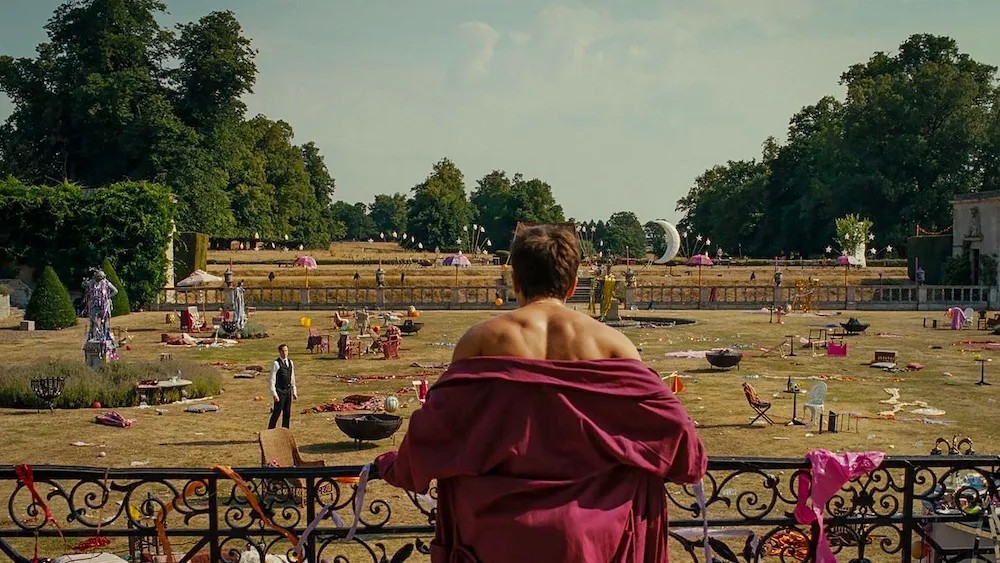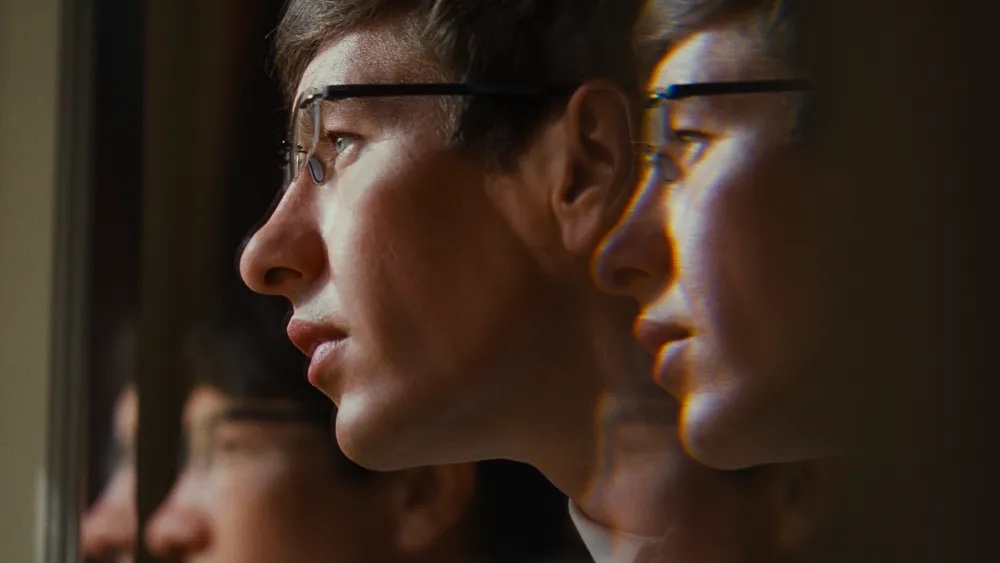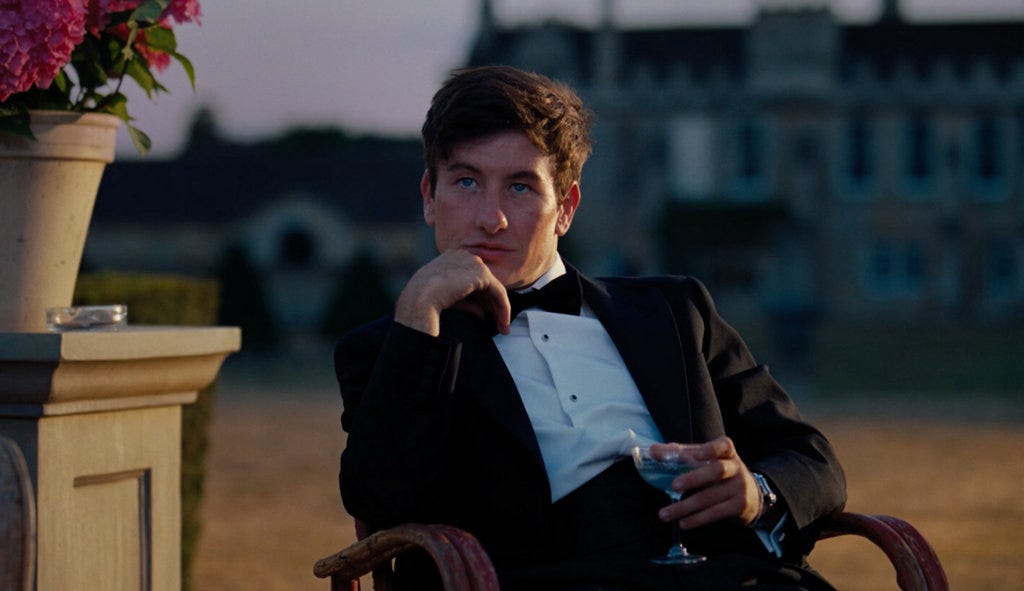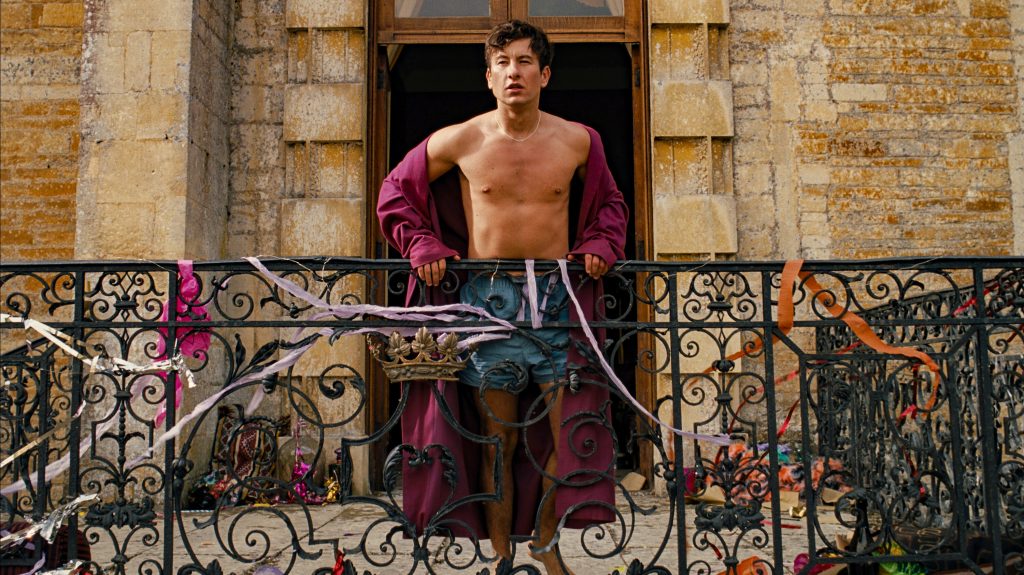
Victoria Boydell went into her initial meeting with writer-director Emerald Fennell thinking she was a long shot to edit Saltburn. She figured that the filmmaker would have the pick of the litter after all the Promising Young Woman accolades following its Sundance Film Festival premiere and later 2020 release. The next thing she knew, her 20-minute Zoom meeting lasted the better part of two hours.
Boydell credits the decision to just be herself.
Fennell’s sophomore feature, Saltburn, is a film about privilege and desire through the eyes of Oxford University sudent Oliver Quick (Barry Keoghan) during his time spent with the Catton family at Saltburn. In finding his place at Oxford, Oliver manages to join Felix Catton’s (Jacob Elordi) circle and manages to get an invite to stay for the summer.
Recently, Boydell spoke with Below the Line about editing Emerald Fennell’s latest vision.

Below the Line: Given that Saltburn marked your first time working with Emerald Fennell, what was your experience like working with her?
Victoria Boydell: I’ve really, really loved collaboration. Working with a director for the first time is always quite challenging in the sense that you have no idea what the parameters are, you don’t know what the rules are, you don’t know how they work. You don’t know whether they like to talk every day on the way to set, whether they want to see cuts every weekend, whether they want to come into the classroom every Sunday, whether they don’t want to see a single frame and don’t want to speak to you if they can help it. You have no idea.
I discovered during the shoot that Emerald is very immersive and she’s got a one-track mind. While she’s shooting, she’s got a shooting hat on. Our conversations were not as often as I’m used to but we spoke maybe once a week or maybe every two weeks. But once she’s in the room, it’s all about the room. We sat in the room on our own for months on end crafting the film. She has an incredibly fast brain. I mean, obviously, if you’ve met her or seen her interviewed, she’s very charismatic, funny, charming, outrageous, and all the things everyone adores about her. But working together, she’s got a really quick brain.
We would watch a sequence or we’d watch the film in the room and I would mark an area that needs some analysis that I think possibly we could move stuff around and maybe lose a montage there and inject one somewhere else. At the end of the screening, she’s done what I’ve done, identified the same thing, but gone five steps further and said, “We’ll take that shot from there, that shot from there, let’s try this, try that, try the voice-over from there.”
No idea is too outlandish or crazy or silly to try. We would try so many things and we were never precious. It didn’t matter if one of us had a terrible idea that we would pursue for a day, which is quite refreshing, actually, because it meant that when she did leave me alone—occasionally, she had other commitments. I wouldn’t have time to show her everything I tried before we put it in a theater in front of the execs. It never mattered. She would never look at me as some directors have and gone, “Why did you road test that in front of all our financiers when I hadn’t seen it?” She doesn’t care because she has final cut.
It’s about what she and I think and maybe very few other people, but there’s no embarrassments. We would come out of every screening and say, that worked, that we should put back where it was, that worked, that we should change. It was all an organically evolving piece of drama, that we weren’t done until we’re done. Everything was fluid and everything was up for grabs.

BTL: What would you say was the most challenging sequence when it came to editing?
Boydell: I think that the most challenging aspects of cutting Saltburn were not necessarily one particular sequence. I would say dealing with passage of time was challenging, both in Oliver arriving at Oxford in September, believing he’s been friendless apart from geeky Michael Gavey for a number of weeks or months, which we mark through Cheeky Girls Christmas, so it’s been at least three months until he comes across Felix with a punctured tire. He doesn’t go to Felix’s house until late summer recess, which would be June.
What we did with the main bulk of Oxford was where it had been written as four dialogue scenes of them getting to know each other, we collapsed it into a montage, where we dovetailed the dialogue from the scenes—that were standalone scenes—put to music, had them doing some mute dancing and different party stuff, and spat them out the other end with Felix doing “Eeny, meeny, miny, moe,” trying to decide which girl to have sex with. In doing so, we were trying to obviously reduce screen time, but give many more weeks of getting to know each other time.
We had similar challenges in Saltburn when Farleigh is kicked out. I think it was originally written as the next day—it’s his birthday and they drove up to meet his parents but that felt too close—that Farleigh needed to leave and a little bit more summer needed to happen. He needed to get back into Felix’s favor before everything goes wrong. We tried to create another mini-summer montage, including an extra masturbation scene, where we’ve stolen other shots and added sounds of Felix masturbating in the bathroom again. Those are changes.
Of course, when Oliver was kicked out of Saltburn, finally, by James, how do you turn the passage of time of 13 years, it was written and performed quite differently with a whole voice-over section explaining what happened in the intervening years. We didn’t feel it was quite working for where Oliver was at now and how impactful it was being thrown out of Saltburn.
We tried a technique of intercutting with increasing speeds—Oliver is in the future, coming home to his apartment and reading the newspaper about Sir James’s death and Elspeth coming into a cafe that’s clearly set during Covid times, people wearing masks. We tried to show that there are two timelines and two events colliding and hopefully people understand that that is our way of showing a passage of time.
In many ways, time was our biggest challenge. I think the other aspect that was challenging in the film is when and how much to reveal of Oliver’s duplicity, when to start showing that he’s an unreliable narrator. How long do you go believing that he’s innocent and possibly a slight victim of this grotesquely funny family and the inhabitants at Saltburn? We played around quite a lot with that.
I think our first cut of the film, you probably understood in the opening voice-over and fast cut section, you probably understood a little too much that he was unreliable and duplicitous. We tried to pull back. And again, with all the reveals later, when he’s in Elspeth’s room when Elspeth is clearly dying, we played around with how much he says, how much he says about his feelings for the family, how much he reveals about what he’s done to them.

BTL: You mentioned the first cut of the film. How long after production wrapped did you have a rough assembly cut?
Boydell: Well, ideally, I like to kick directors out of the room for quite a few days. Emerald was really amenable to it, she was very kind. I would say she came in maybe 10 working days after she finished shooting, which I guess would be two whole weeks. It was roughly that. She may have come in after after eight working days, but it was roughly about 10 working days—especially since it’s quite a beast of a film. She laughs and says the assembly was three hours long, three and a half hours long. I can’t remember it being that long but it was quite long.
BTL: How long was the initial cut?
Boydell: The initial cut was quite long. Emerald has quite an unusual take on assemblies, which was quite hard for me to fathom. Basically, she likes the assembly to be as loose and rough as it possibly could be, whereas I normally produce quite tight assemblies. There are sequences I deliberately leave long. I will leave a montage roughly a third longer than I know we’ll end up to having it because I like to see all the shots that I like. There’s nothing worse than a director seeing something that’s cut too tight because they usually then want you to add everything back in and make it five times too long and then whittle it down with you. I quite like to leave some sequences knowing that they’re longer than they will be.
Obviously, unless you’ve had a discussion with a director where you say that sequence doesn’t work, should we just not cut it in at all? Generally, I leave everything as scripted from the first line to the last line so the assembly is always going to be a bit baggy, but Emerald wanted it to be looser than I would normally have it. The dance sequences, the montages—she wanted the assembly to have zero music, no music at all, not even playing in the club in the party scenes so they’re dancing mute. She wanted everything to be deliberately long, which is quite tricky to do in a dialogue scene.
Remember there are quite a few scenes where they’re sitting around the table talking. I figured that you can’t really alter the timing by having everyone have way more pauses than they were performed. I allowed those sequences to be cut in terms of bouncing around the table. I tried to leave as much air around the head of the scene, not my usual I’ll slam straight in with the first line knowing that we don’t need them walking in the room.
For Emerald, she kind of wants to see people walking in the room, getting into position, because she wants to do that bit with me, I guess. Which is fine. What once I got into the groove with that, I stopped worrying about my own ego because that’s what it’s partly about is about my ego of wanting to show her the cuts that I know we’ll end up with—that would be my instinct. I had to just put that aside of it.

BTL: Which software system did you use to edit the film?
Boydell: I cut on Avid, which I think is what most feature editors use, isn’t it? You could probably tell me.
BTL: Avid is the frequent answer that I get but I’ve gotten Premiere and other answers whenever I’ve asked.
Boydell: I’ve been using Avid since the year it was—I don’t know what year it came in. Late ’90s, I guess. Yeah, I’ve been cutting on Avid ever since. Luckily, Emerald doesn’t know how to use the Avid, so there are no moments where I came back from having a pee and Emerald sitting there re-cutting, thank God.
BTL: I will say that I cringed when I watched the scene where Barry is on top of the grave.
Boydell: Cringed in a painful “I wish they’d cut it out” or cringed in a good way?
BTL: Cringed in a I can’t unsee this—
Boydell: [Laughs] You’re not the first person to say it but I think the British audience has more of a stomach for it. Possibly? Well, I hope we didn’t offend you too much. I mean, I hope we offended you a bit but not too much.
BTL: I’m just glad I wasn’t eating during that moment because I would have probably choked.
Boydell: It is so interesting. Emerald and I were absolutely unified in that sequence. Time again, we were asked to trim it down and we, in good faith, had a go but it made the scene less emotional, less sad if you cut out while he’s still thrusting. It says something very different, that he’s just getting his rocks off, which is not what we were trying to say. We both found it profoundly sad and quite romantic and a bit heartbreaking but maybe that’s why Emerald and I worked so well together because we’re sick puppies and not everyone shares our tastes.
Saltburn is now playing in theaters.





